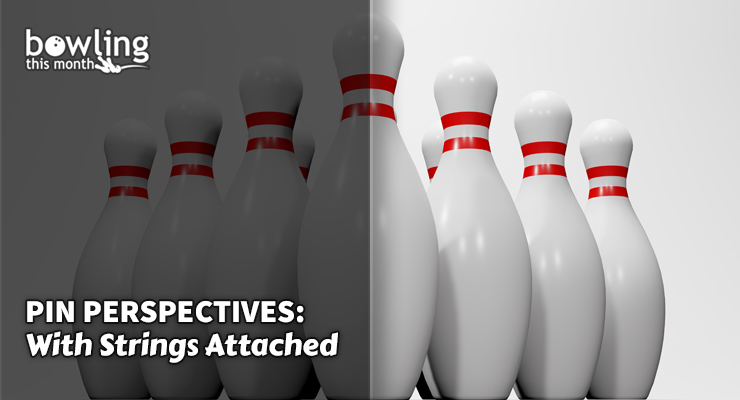Bowling is a business like any other. While we in the Bowling This Month family immerse ourselves in the skills and knowledge that are key to better bowling, at times it is equally important to open our eyes to the business side of our sport, off the lanes. Now is such a time, and the topic that is bringing us to a crossroads is string pinsetters.
Purists will no doubt say that they don’t consider this to be bowling and that they will quit if string pinsetters become the norm here in the USA. Proprietors, whether they are themselves bowlers or not, and especially in the aftermath of lost 2020 revenue due to COVID-19, don’t have that luxury and need to focus on the money. There are also those who maintain that the longevity and future of bowling are tied to open play and bowling for entertainment, not leagues and competitive bowlers. In this editorial, we will examine what string pinsetters are, how they work, what research has been done on the matter so far, and how the business side of bowling, regarding string pinsetters, is going to change the landscape for our sport.
String technology
Developed back in the 1960s, string pinsetters are machines where there is a cord attached to the top of each pin. When the bowling ball knocks down the pins, the machine simply pulls the pins up by their strings and replaces the pins back on spot for a spare attempt, or the entire rack for a strike attempt. These machines have traditionally been used on small non-regulation lanes, as parts of carnivals, or in the entertainment section of some bowling centers. In Canada, where string pinsetters ...
This article is only available to Bowling This Month subscribers. Click below to get instant access to this article and all of our other premium instructional content.
Subscribe to Bowling This Month
Already a Bowling This Month subscriber? Click here to log in.
Image Credits: Bowling pins image (©iStock.com/Tilegen) is licensed for use by BTM and is the copyrighted property of its original creator.
